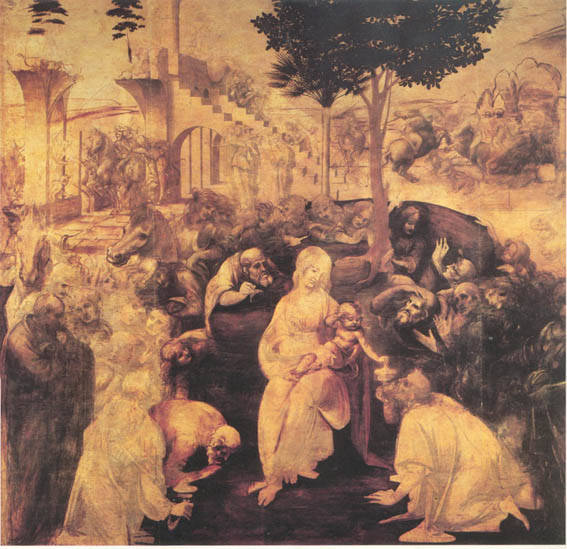‘Vitruvian Man’ Will Travel to the Louvre, Italian Court Rules
Veneto’s administrative tribunal rejected an appeal against the loan of Leonardo Da Vinci’s famous “Vitruvian Man,” ruling that the artwork will be allowed to travel to the Louvre and be part of the museum’s highly anticipated exhibition dedicated to the famed Renaissance artist.
Italia Nostra, an Italian heritage conservation group, had tried to prevent the loan, claiming that the work, a drawing dated to around 1490, was too fragile to travel. The group argued that loaning this work would constitute a violation of an Italian law included in the code of cultural landscape and heritage, which states that works from a museum, gallery, archive or library’s principal collection cannot be loaned if they are “susceptible to damage during transportation, or in unfavorable environmental conditions.”
As Italia Nostra pointed out, “Vitruvian Man” - perhaps one of Leonardo’s most iconic pieces depicting the proportions of the human body according to the 1st century Roman architect Vitruvius Pollio - is among the 16 main works of Venice’s Accademia Galleries, where it is not often displayed, as it must be protected from direct light and constantly monitored. However, it was shown earlier this year as part of the worldwide celebrations for the artist’s anniversary of death.
And, as the Veneto Tribunal noted, others among the Galleries’ 16 principal works have been loaned in the past. The court also stated that, according to two of Italy’s most important restoration institutes, the work could in fact travel provided it be shown for a limited time and under the correct lighting circumstances.
For these reasons, it ruled that the loan of “Vitruvian Man” will indeed take place as part of the exchange agreement between the culture ministers of Italy and France dating back to September 24, an initiative which itself proved difficult to carry out and was met with great criticism. In exchange for the works lent from Italy, the Louvre has agreed to send two Raphael paintings to Rome next year in occasion of the painter’s own 500th anniversary of death.
Italia Nostra was obviously unhappy with the ruling, stating that this was “not a good day for protection in Italy.” Others were more pleased, including Italian cultural minister Dario Franceschini who tweeted “Now the great Italo-French cultural operation of the two exhibits on Leonardo in Paris and Raphael in Rome can begin.”
But while this issue appears to be resolved, similar debates are sparking regarding other works involved in the Italy-France exchange agreement. A member of the Uffizi Galleries’ scientific committee, Tomaso Montanari, now claims that two Leonardo paintings that have already left for Paris, “Study of a Landscape” (1437) and “The Adoration of the Magi” (1481), are on the Uffizi’s list of “unmovable objects.”
The art historian argues that the fact that they were allowed to travel despite this, is a sign that politicians are now in charge of Italy’s cultural heritage instead of scientists and experts. “Scientific knowledge should have priority over politics,” he said.
Uffizi Director Eike Schmidt replied that the works will obviously be moved and displayed with extreme care and kept under their ideal prescribed conditions. “From a conservation point of view, it made no difference if they are exhibited in Florence, Rome, Venice or Paris,” he said.
Though it is certainly undeniable that such delicate and important works of art should be regarded with great care and attention, it’s hard to shake the feeling that there is more than simple scientific diligence behind the resistence to having works (particularly Leonardos) travel outside of Italy (particularly to France).
The idea that France “steals” Italian art is a deep-rooted one. It is often cited jokingly amongst Italians but some have been known to take it quite seriously. Most famously, back in 1911, Vincenzo Peruggia stole the Mona Lisa in what is considered one of the greatest art thefts in history, an episode which many argue contributed greatly to the painting’s immense fame. When he was caught with the work in Florence, Peruggia claimed he wanted to bring her back to Italy, her “homeland.”
This same argument is often used by populist and right-wing politicians to feed nationalistic sentiments. In fact, former deputy minister of culture Lucia Borgonzoni of Lega Nord claimed that the Louvre’s exhibition was a way for France to culturally appropriate the Italian artist.
Such arguments go completely against the spirit in which the works they claim to want to “protect” were realized. As a master of the Renaissance, Leonardo is regarded as a Humanist symbol. And Humanism is all about celebrating mankind, its achievements, and the universal values we all share. This is exaclty why Leonardo remains relevant to this day, not just as a symbol of Italian cultural heritage, but as a representation of Human abilitie and values.
As Franco Conte, the lawyer for a consumer’s rights group that opposed the Italia Nostra petition, remarked, the ruling “recognized the fact that art is something that should be shared.”






































i-Italy
Facebook
Google+
This work may not be reproduced, in whole or in part, without prior written permission.
Questo lavoro non può essere riprodotto, in tutto o in parte, senza permesso scritto.